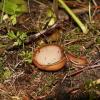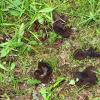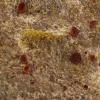
01-08-2015 12:29
 Stephen Martin Mifsud
Stephen Martin Mifsud
Hi, friends. I am currently in Finland and came ac

09-08-2015 20:55
 Andreas Gminder
Andreas Gminder
Hello, from decaying wood of Alnus is the followi

06-08-2015 00:31
 Rubén Martínez-Gil
Rubén Martínez-Gil
Hola a todos. Subo unas fotos de un Microglossum

08-08-2015 22:34
 Bernard CLESSE
Bernard CLESSE
Bonsoir à tous,Trouvé cet après-midi dans une o

09-08-2015 07:10
 Michael Beug
Michael Beug
Does anyone have literature on Mycogone rosea they

09-08-2015 20:55
Hi to everyone I need your help with this Daldini

09-08-2015 00:39
Esquivel-Rios EduardoESta Mancha alquitranosa, causada por Apiosphaeri

06-08-2015 18:21
Steve ClementsBonjour,On a trouvé un Hyphomycete et un Pyrenomy

08-08-2015 21:36
 Bernard CLESSE
Bernard CLESSE
Bonsoir à tous,Trouvé cet après-midi en hêtrai

01-08-2015 20:33
I need your help again with this article Nannfeld
 Hi, friends. I am currently in Finland and came accross three cup funghi which I wish to share with you, I have identified one as Humaria hemisphaerica but the others I had not much time to investigate and perhaps someone can save me some time if familiar with them :-)
Hi, friends. I am currently in Finland and came accross three cup funghi which I wish to share with you, I have identified one as Humaria hemisphaerica but the others I had not much time to investigate and perhaps someone can save me some time if familiar with them :-)
Hello Stephen,
I would agree with nr 1 Humaria hemisphaerica.
2 and 3 should be a Peziza. I assume it is acid soil there? Then both specimens could be P. badia. But it should be proved microscopically.
Regards from Lothar

The dark brown cups are Peziza badia, while I am still unsure about the third Peziza mainly because I do not remember that there was any dark-brown specimens; the cups where smaller (1-4cm); and the habitat was different, yes probably acidic too, but in sand/gravel shelves. Nevertheless I could go and check again. Unf. I have no microscope here in Finland.

Case is closed, both 2 and 3 are Peziza badia (=nothing interesting for most of you else distribution is up North in Jakobstad area, Finland).


